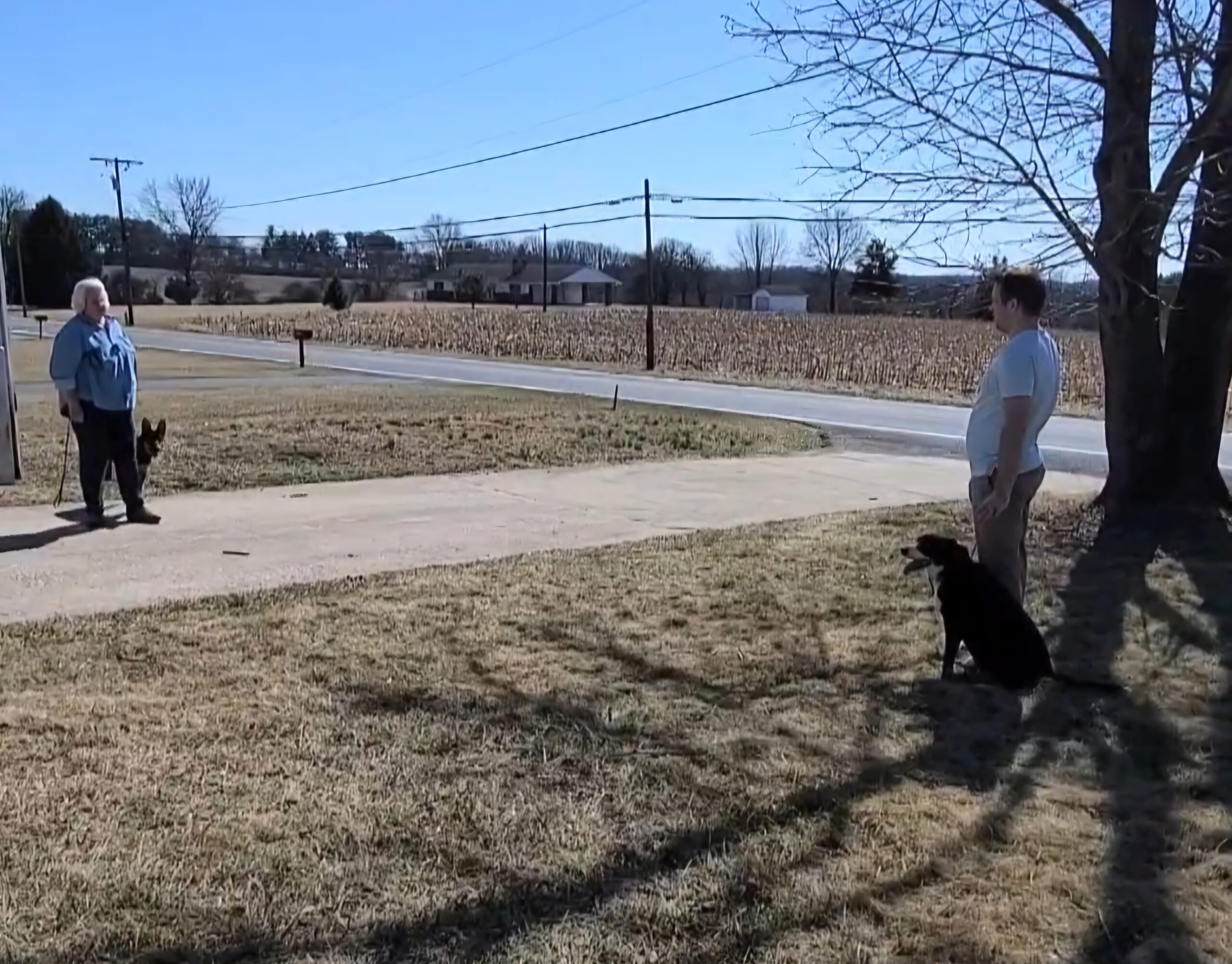 Failure Stacking in Dog Training: How Overcoming Mistakes Leads to Lasting Success
Failure Stacking in Dog Training: How Overcoming Mistakes Leads to Lasting Success
I actually had the hubris to think I invented the term “failure stacking”, but that honor goes to a woman named Sunny, who writes to a substack about the stock market and trading.
The difference is in dog training, we deliberately manufacture the potential for failure as a training modality. I call it failure stacking simply because all along the training timeline, we are introducing elements that are specifically designed to create conflict, not in the hopes that the dog will fail, but that he will see the logic in choosing success.
Why Failure Matters in Learning—For Fish, Dogs, and Humans
An organism can learn without ever encountering the possibility of failing at something. It’s unlikely, but it could happen. I guess fish in a bowl would be a good example. There’s no selection pressure for survival in a tank. Their water is aggressively monitored, cleaned and oxygenated, they are fed routinely and they live fairly long lives. For fish in a tank… add predator fish, turn off the oxygenator, deprive them of food. That’s failure stacking.
In the wild, there’s a reason that most species of fish lay thousands of eggs. The likelihood of survival from egg to adulthood is fraught with risk. From the time the eggs are broadcast in the water, through the larval process, into fingerlings and ultimately adults, their ability to evade predators increases the likelihood of survival. The faster and more evasive you are, you’ll be fortunate to live (and breed) another day.
Survival is predicated on the ability to overcome failure, whether you are a fish, or a human or a dog.
Dog Training Is About Progress, Not Perfection
In dog training, we are practicing for improvement. We are not concerned with perfection for perfection’s sake. We are approximating perfection; only reinforcing any iteration that begins to resemble our version of that ideal. We stack failures incrementally, helping the dog learn to discriminate right behavior from wrong.
The trouble arises when folks think they only need to show a dog a thing once or twice and then expect them to remember that iteration for all time.
The Myth of Instant Learning: Why Repetition Matters
There are a lot of mechanics in place to introduce, teach and proof behaviors. Repetition for repetitions sake yields uninspired results. If the repetition is sloppy, subsequent reps will look the same way, unless effort is made to improve. In Daniel Coyle’s book “The Talent Code”, the reference to deep practice explains this. In the first chapter, Coyle writes “Making progress [becomes] a matter of small failures, a rhythmic pattern of botches, as well as something else…”
Failure Is Not a Flaw—It’s a Feature of Learning
There’s that word. Failure. It’s not a condemnation after all. It facilitates growth.
Coyle goes on to write about the phenomenon of slowing down to analyse a movement or skill into tiny increments and correcting them as individual components as opposed to trying to address the whole exercise.
Those incremental components are where we are headed when we are rehearsing any work with a dog, whether it’s modifying behavior through basic obedience or any competitive level of performance across disciplines. We start small, incrementally, and only assemble the ‘big picture’ when the dog has demonstrated a functional knowledge of the behavior we are expecting. We are stacking failures from the very first repetition to the very first request that the dog performs the behavior on cue by supplying enough of a distracting element to pique the dog’s interest but not overwhelm it. That could mean simply moving to a new location to work, or supplying some element into the environment that will compete for the dog’s attention.
The skill-building put into the 9 year old dog-fighting Border Collie-Pit mix pictured above is the same incremental skill-building put into any Obedience Trial competitor. It may not look like it to the layperson, but the dog can’t parse the difference between the choice to ignore the cars she used to chase or having to ignore other dogs retrieving over the high jump in the adjacent ring at an obedience trial.
Folks that don’t understand that haven’t trained enough dogs.
How Training Mechanics Shape a Dog’s Understanding
Failure stacking creates options. The more information a dog has, the more informed his choices are going to be. Throughout the training process, we have supplied the dog with a high number of repetitions before we ever ask him to execute a behavior on his own. We systematically show the dog many physical cues which predict every behavior. Our hand placements, or foot movements, how we articulate our bodies.
The sameness with which we execute every repetition, not only become a reminder to the dog about what we expect, it never comes as a surprise to the dog. The sit behavior is always prompted with “left hand slides down the leash to where the snap meets the collar, right hand replaces the left hand at that location, as the left hand slides down the dog’s back, with the handler’s thumb pointing towards the handler’s left leg, resting just above the pelvic girdle and pressing down gently as the right hand gently lifts towards the handler’s left shoulder.”
The mechanics of this movement should look the same during the introduction of the sit behavior. It should look the same from dog to dog, and from handler to handler. It not only creates predictability to the dog, but in the introductory phase, as a trap to facilitate the execution of the behavior, independent of the dog’s willingness to cooperate.
The Importance of Repetitions Before Real-World Proofing
The failure to sit isn’t a crime, but it is prevented by having the dog mechanically in a position he cannot escape from until he sits. The dog learns two things from that encounter; first, that sitting isn’t as unpleasant as not sitting, and secondly that sitting is the only option in this situation.
The dog begins to sit more quickly as he begins to take note of the physical cues listed above, what pressure that does occur is brief and not unpleasant, and the dog is rewarded for a prompt response.
It is only at that point that the cue to sit is applied. The mechanics remain the same, now it is just paired with the command to ‘sit’.
Why Dogs “Forget” Behaviors Outside the Kitchen
Even at this point, the dog is still not expected to perform the behavior entirely on his own. The reasons why are simple- the dog may have a basic understanding of the exercise based on the number of repetitions it has already completed, but has the dog been tested in a situation that competes for his attention?
As a professional trainer I cannot count the number of times I have had an owner tell me “(s)he will [insert behavior here] in the kitchen for a treat. but once we go outside, (s)he forgets what [insert behavior here] even means!”
Well of course not! The dog’s knowledge was never challenged in an environment with competing interests!
Building Reliable, Repeatable Training Results
We increase our level of expectation based on the dog’s level of understanding, only increasing the difficulty when the dog has given clear signals of understanding the request. Systematically moving through a set course of development in order to achieve a shift in modal behavior requires overly simplified modeling or molding to introduce a behavior, many repetitions of those mechanics while repeating the cue, and finally testing the dog’s understanding by expecting it to perform under a variety of circumstances that compete for it’s attention.
At any point along that timeline, the dog is being prepared to overcome failure through the monotony of repetition while being prevented from refusal, and ultimately, in the last phase, through corrective action for making the wrong choice, when the right choice was available, understood, and ignored anyway.
The point of a great, functional training system is to be able to achieve reliable results, dog after dog, regardless of whether we are addressing behavior deficits, wishing to achieve predictable performance at home, in public, or in the show ring or field.
Dog Training Should Be a Partnership, Not a Struggle
The availability of an actual dog training method suitable for every dog, enables the practitioner to achieve reliable, reproducible results. Our success has often been vilified by complainants who struggle to accomplish any meaningful results with their own dogs, or who continue to rely on equipment to do their training for them.
Dog training isn’t something you do to a dog. It takes time to nurture a respectful, reciprocal relationship. It’s something you do with a dog. If your training isn’t ending up with your dog becoming a willing participant in your training adventures, then you are, in fact, doing it wrong.
When you are ready for results that don’t require anything other than time, patience and a plan, give us a shout.
We offer our Internationally acclaimed online dog training, private training for adult dogs, and puppy training in the Carroll County Maryland area.


